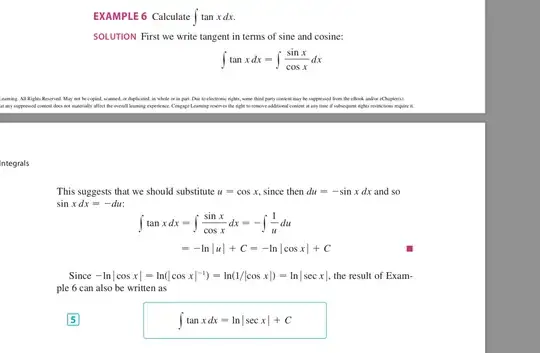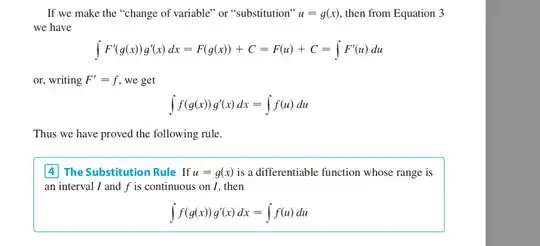I'm reading my textbook and I came across this problem:
The above makes sense to me except for one line:
$$-ln|\cos{x}| = ln|\cos{x}|^{-1}$$
Why is this?
I plugged in $\frac{\pi}{3}$ and it works, but I'm not sure why.
Also, in the above question, what do the du and dx represent? When we write $du = -\sin{x} \cdot dx$, what are we really saying?
Like in this explanation for substitution rule, what does the $du$ represent?

